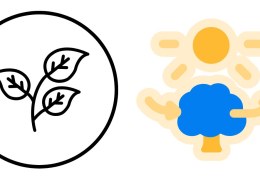Photosynthetic organisms are found in several biological kingdoms, as photosynthesis is a fundamental process for producing energy in many life forms. Here’s a breakdown of the kingdoms that contain photosynthetic organisms:
1. Plantae (Plants)
The Plantae kingdom is home to the majority of photosynthetic organisms. Plants, including trees, flowers, and grasses, perform photosynthesis in specialized cells containing chloroplasts that house the pigment chlorophyll. Chlorophyll absorbs sunlight, allowing plants to convert carbon dioxide and water into glucose and oxygen.
- Examples: Trees, shrubs, grasses, mosses, ferns, algae
2. Plantae (Algae)
Algae, although sometimes classified separately or in different kingdoms (e.g., Chromista or Protista), are also photosynthetic organisms and can be considered part of the broader plant group. They perform photosynthesis in a similar way to land plants but often live in aquatic environments. Algae can be unicellular or multicellular.
- Examples: Green algae, red algae, brown algae, diatoms (unicellular algae)
3. Chromista (Certain Algae)
Some algae, like brown algae and diatoms, are classified under the kingdom Chromista. These organisms contain pigments such as fucoxanthin in addition to chlorophyll, which allow them to perform photosynthesis, especially in marine environments.
- Examples: Brown algae (e.g., kelp), diatoms, golden algae
4. Bacteria (Cyanobacteria)
The kingdom Bacteria contains photosynthetic organisms, particularly cyanobacteria, which are sometimes called blue-green algae. Cyanobacteria are among the earliest organisms to perform oxygenic photosynthesis (producing oxygen as a byproduct) and played a critical role in the oxygenation of Earth’s atmosphere.
- Examples: Cyanobacteria (e.g., Anabaena, Spirulina)
5. Protista (Some Protists)
Some organisms in the Protista kingdom are photosynthetic. This group includes various unicellular eukaryotes like euglenoids and dinoflagellates, which contain chloroplasts and can perform photosynthesis.
- Examples: Euglenoids (e.g., Euglena), dinoflagellates (e.g., Gymnodinium)
Summary of Kingdoms with Photosynthetic Organisms:
- Plantae: Land plants, mosses, ferns
- Chromista: Certain algae (e.g., brown algae, diatoms)
- Bacteria: Cyanobacteria
- Protista: Euglenoids, dinoflagellates, and other protists with chloroplasts
In essence, photosynthetic organisms are spread across several kingdoms, from simple single-celled organisms like cyanobacteria to complex multicellular plants. This diversity allows photosynthesis to occur in a variety of environments, from terrestrial ecosystems to the oceans.

